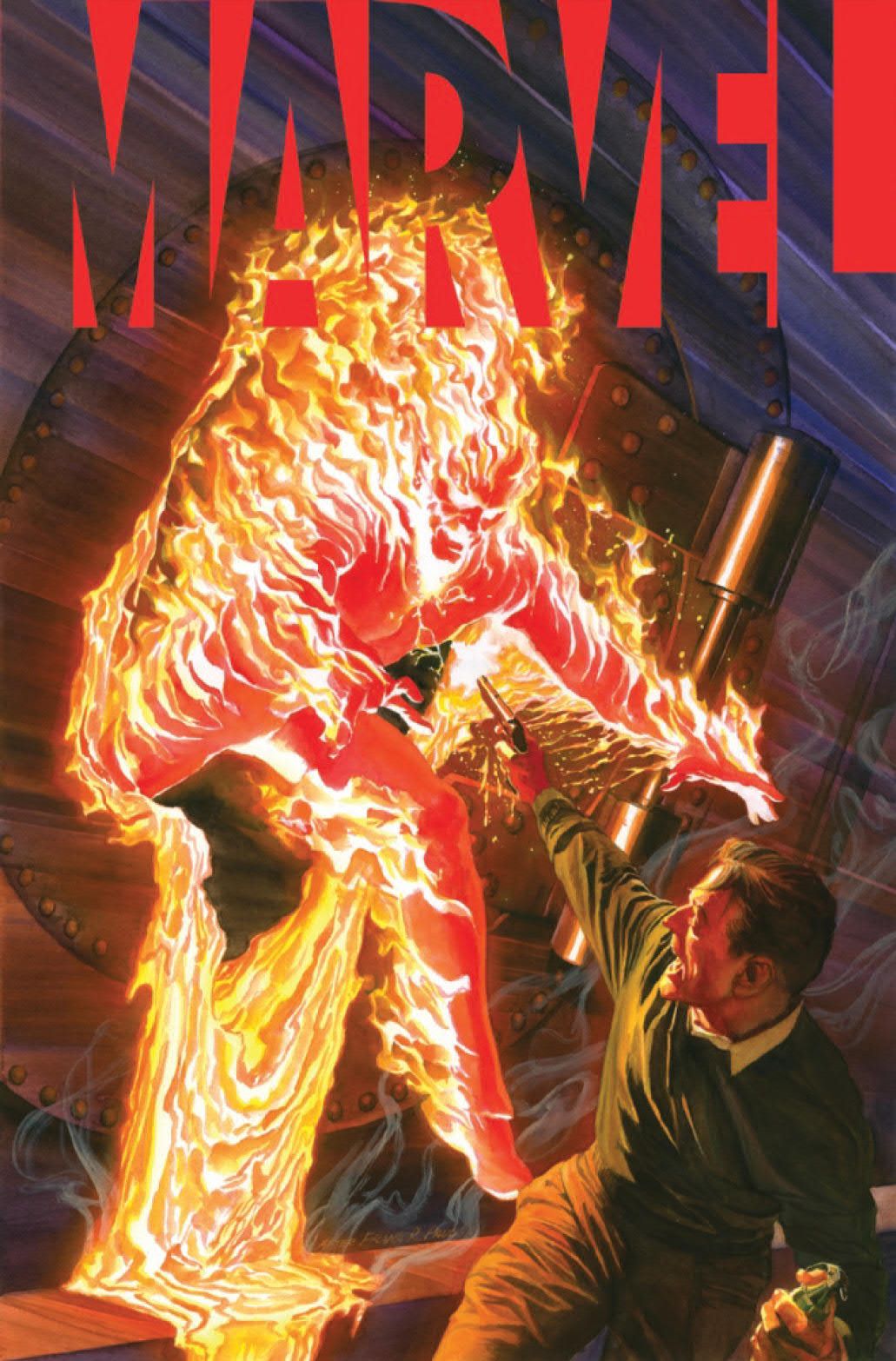Marvel #1
- WRITER
- Kurt Busiek, SAJAN SAINI, Alex Ross, Steve Darnall
- Artist
- Steve Rude, Frank Espinosa, Alex Ross
- Letterer
- VC's Clayton Cowles, Steve Rude
- Cover Artist
- Alex Ross
- Publisher
- Marvel Comics
- Price
- 4.99
- Release Date
- 2020-03-04
- Colorist
- Alex Ross, Frank Espinosa, Steven Legge
In a lot of ways, Alex Ross has changed the way people see superhero comic books by celebrating and visually reinventing the medium's history. Over 20 years after Ross teamed up with Kurt Busiek for the universally acclaimed miniseries Marvels, Ross and Busiek have reunited for a new miniseries that provides its own unique exploration of the Marvel Universe's extensive history and, this time, they're not alone. Marvel is a six-issue miniseries representing Ross' original vision for Marvels: An anthology miniseries blending established and new voices to the Marvel characters journeying through the universe's history. And, in its debut issue, the new effort is largely a rousing a success.
With the omnipotent supernatural villain Nightmare providing an overarching narrative framing device for the anthology, the opening issue focuses on two separate stories. The first is an unseen, offbeat tale starring Spider-Man and his relationship with his webbing across his entire superhero career. The next takes place shortly after Captain America first joins the Avengers, as the team addresses its complicated dynamic with the Hulk in the way that they know best, while Nightmare's role in the wider story is gradually revealed.
Ross and Steve Darnall craft the framing story, with Ross providing his signature painted style as Nightmare weaves his tale. This prologue is one of the weaker parts of the issue, unintentionally ambiguous and overly reliant on exposition as the nature of Nightmare's latest scheme unfolds. Fortunately, the issue's epilogue rectifies this by answering some of these questions, but making Nightmare the anthology's ghost host is a murky way to open the series. And while Ross' visuals are darker than usual, it befits Nightmare's approach and shifts along with the epilogue to complement the shakier opening.
Sajan Saini and Frank Espinosa's Spider-Man story is the most enjoyable segment of the entire debut issue, with Espinosa's artwork giving the friendly neighborhood web-slinger a more raw, unorthodox style that doubles down on punk rock energy. Saini's characterization of Peter Parker is spot-on, and Espinosa is able to bring in plenty of classic, colorful Spider-Man villains into the mix. Espinosa's style is perfectly suited for bringing the short story's action sequences to kinetic life as Peter discovers how important his webbing is to his costumed heroics.
Kurt Busiek and Steve Rude's Avengers tale is a clear love letter to the Silver Age of the premier superteam's early years, right down to the panel layouts, Rude's clean-lined approach and lettering and Steven Legge's color palette. Busiek has always had a clear love of the Silver Age, both in his mainstream work and his creator-owned series Astro City. Despite the throwback style and time period, the short story doesn't feel particularly dated as Earth's Mightiest Heroes confront the Jade Giant in a fracas set in the heart of Avengers Mansion, with Rick Jones largely serving as the story's P.O.V. character.
Marvel is a strong start for Ross' celebration for the Marvel Universe's past while bringing new creative voices to the Marvel Universe to provide their own unique perspective on its colorful characters. The blend of new and established talent makes the anthology series just as much a showcase as a walk down memory lane and the creators in the debut issue certainly bring their respective A-games. While the prologue is still shaky, everything clicks into place once Ross and Darnall reveal the stakes by the issue's end, and this comic offers a promising look at the Marvel Universe that doesn't stick to any house style and celebrates its creative team's distinct voices.

